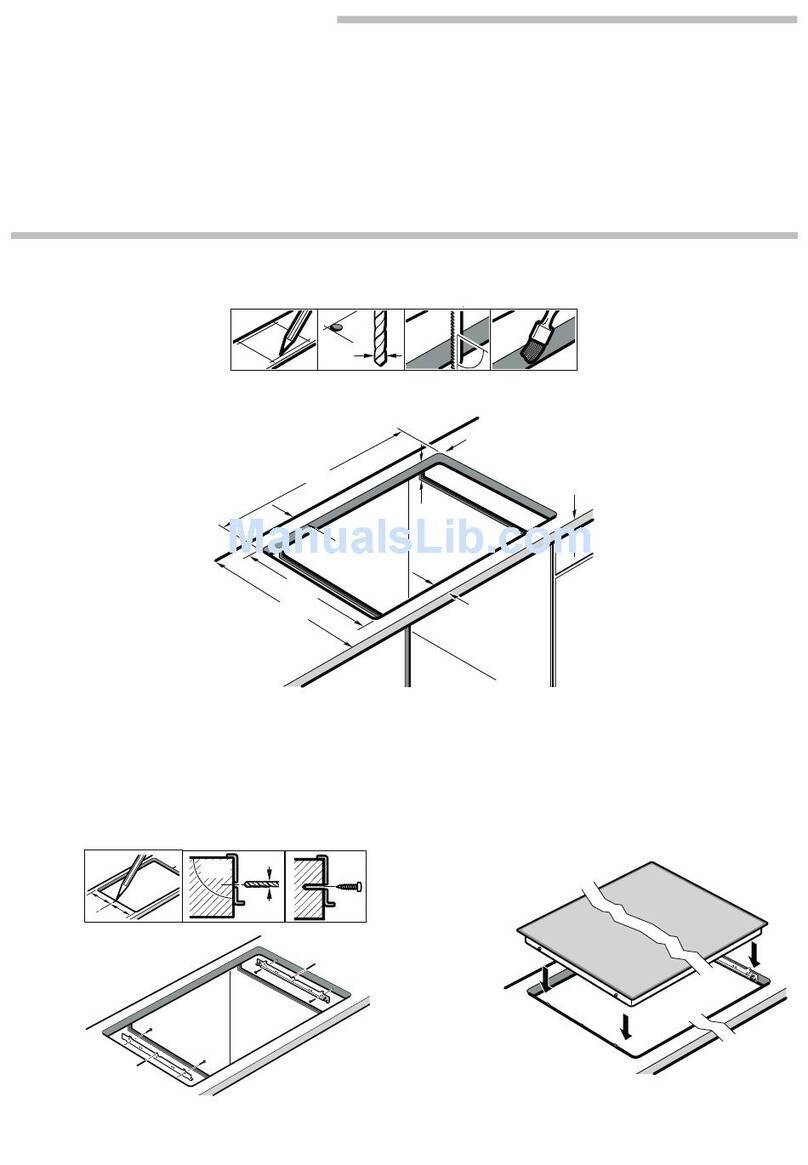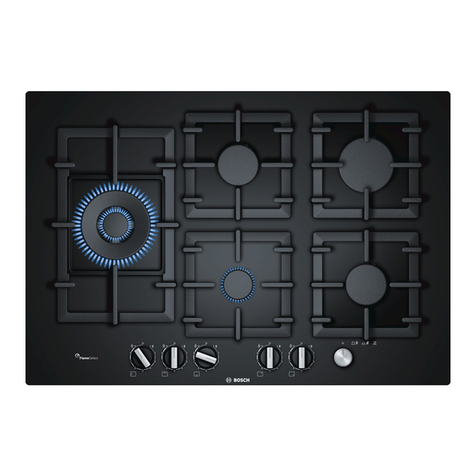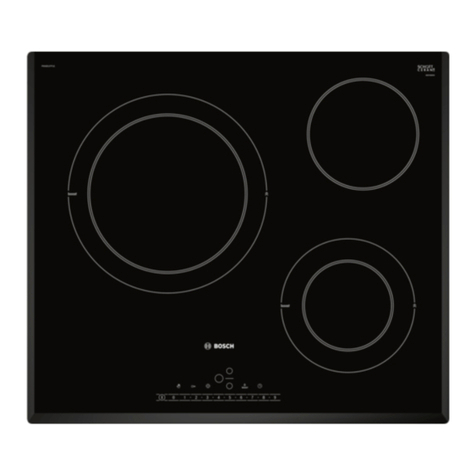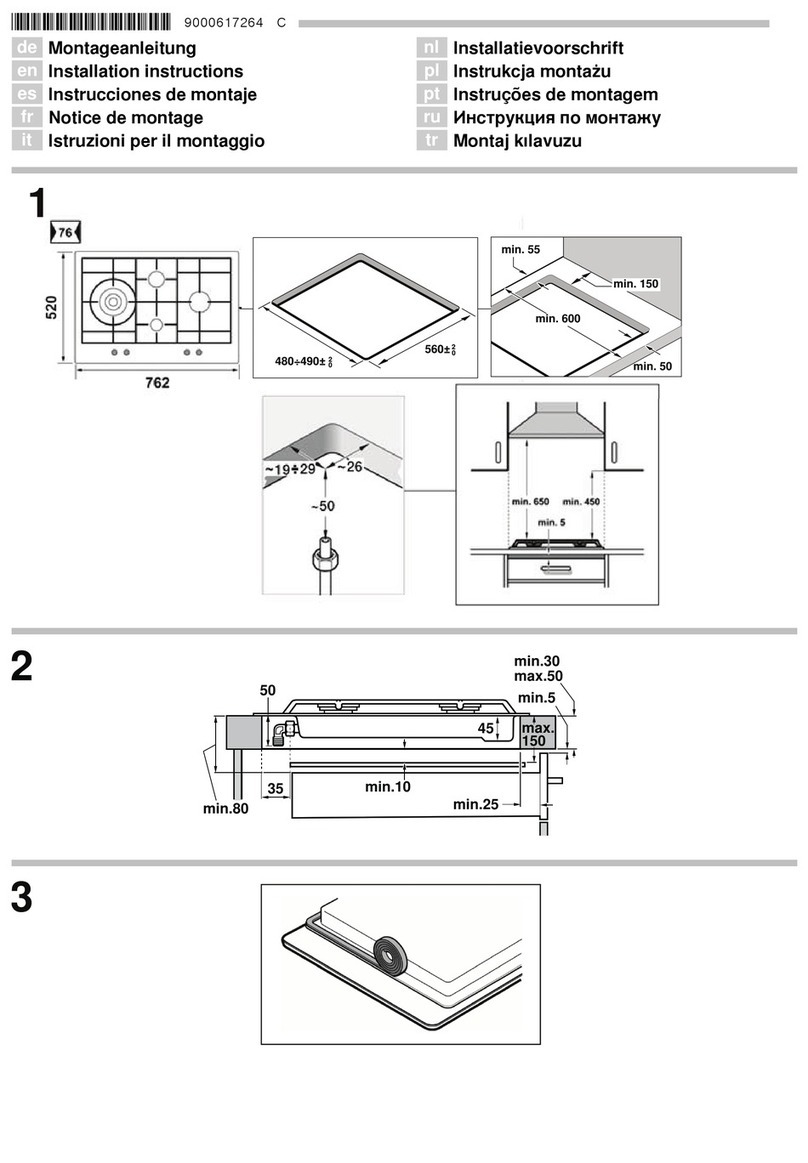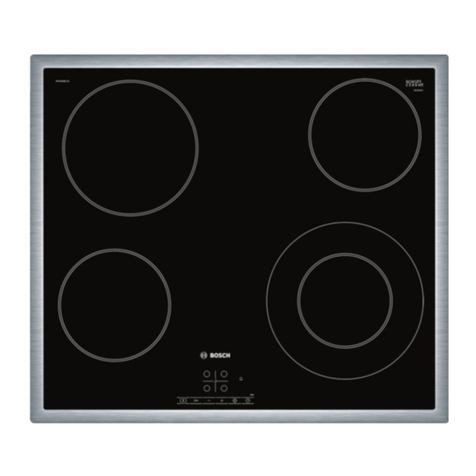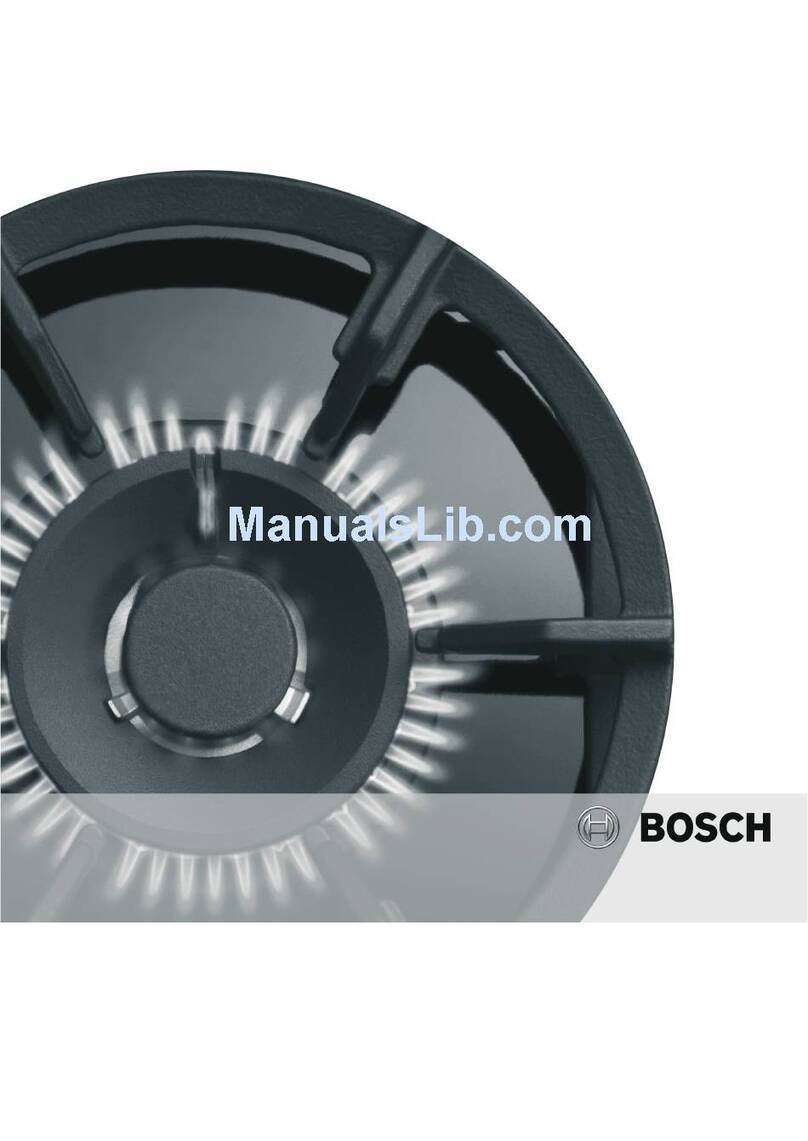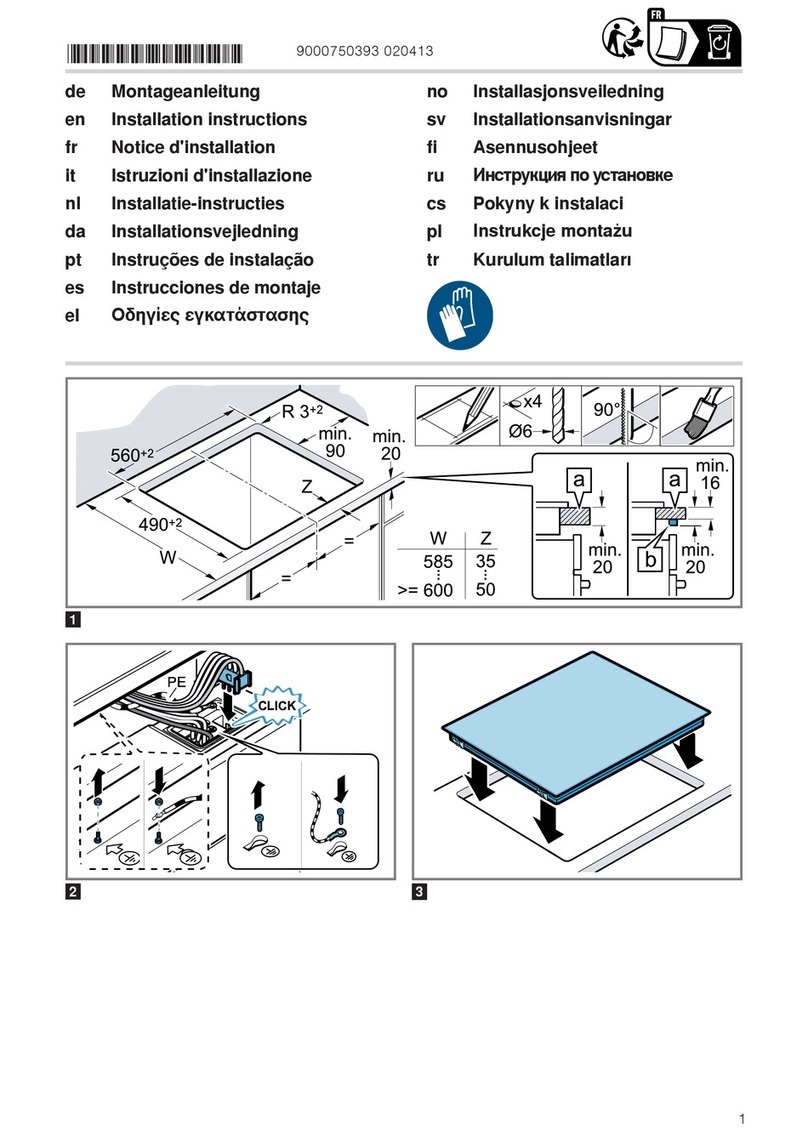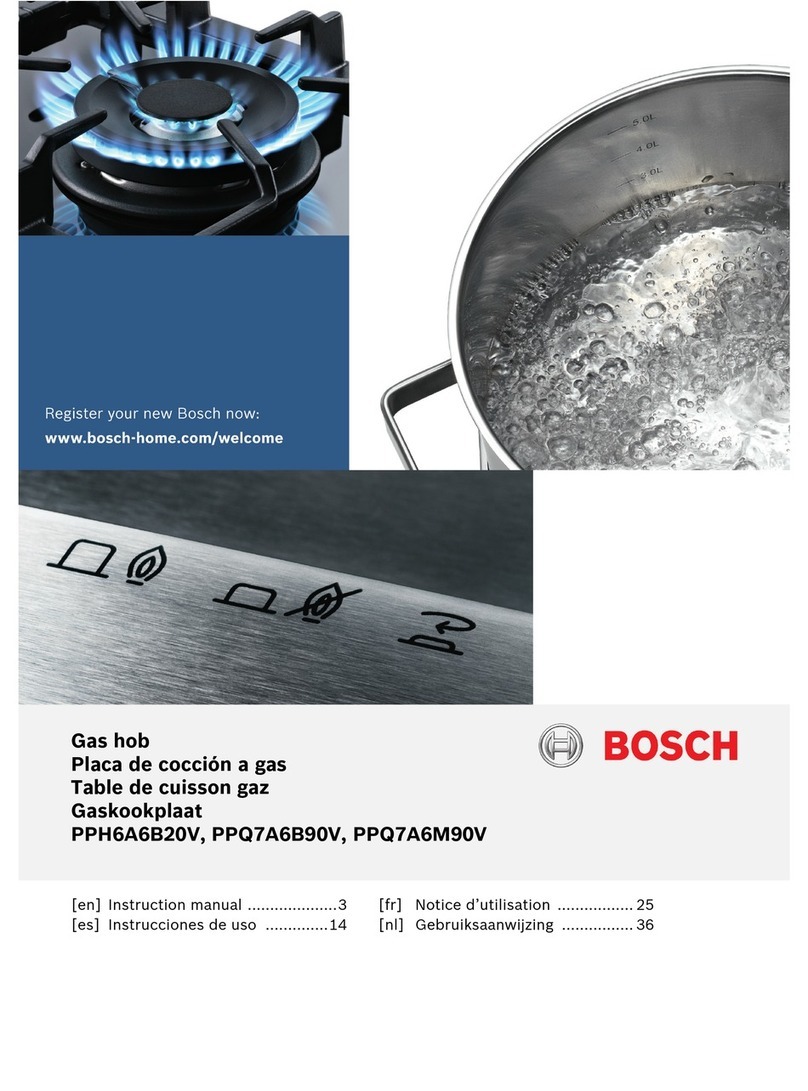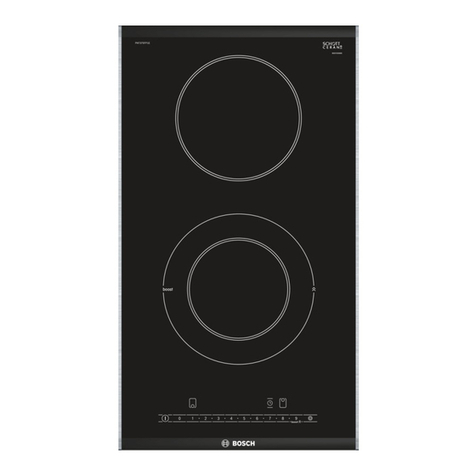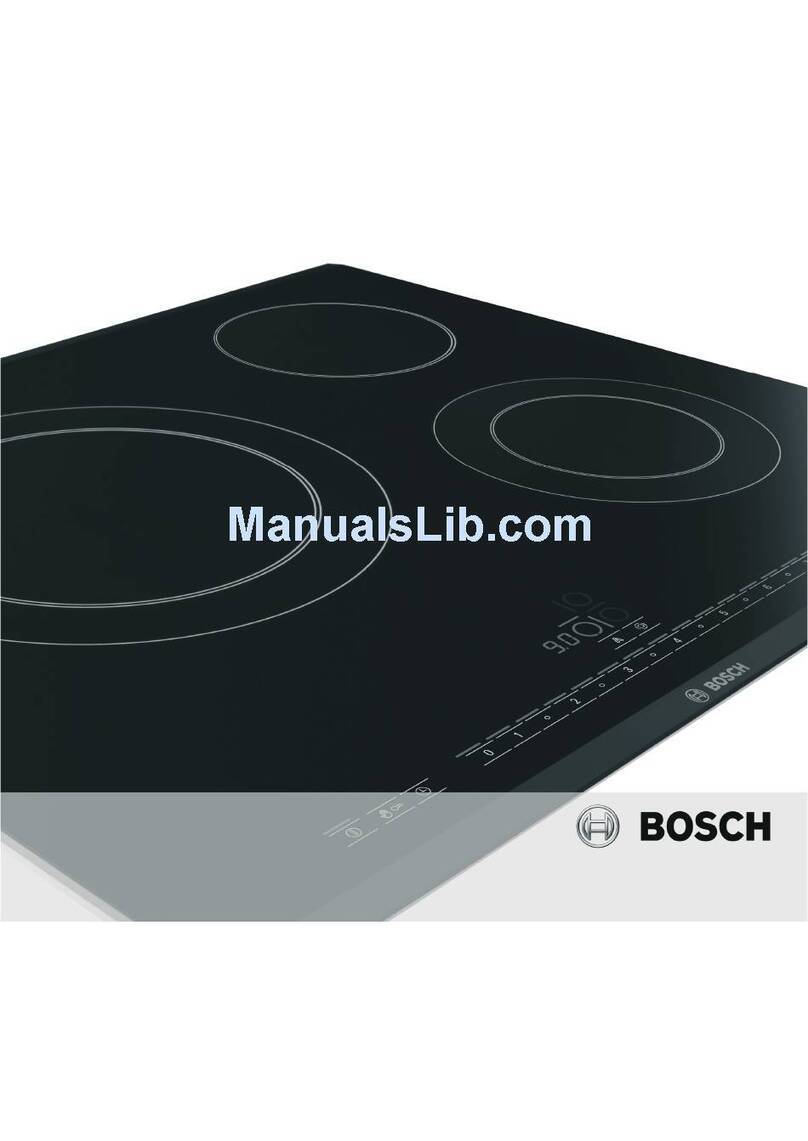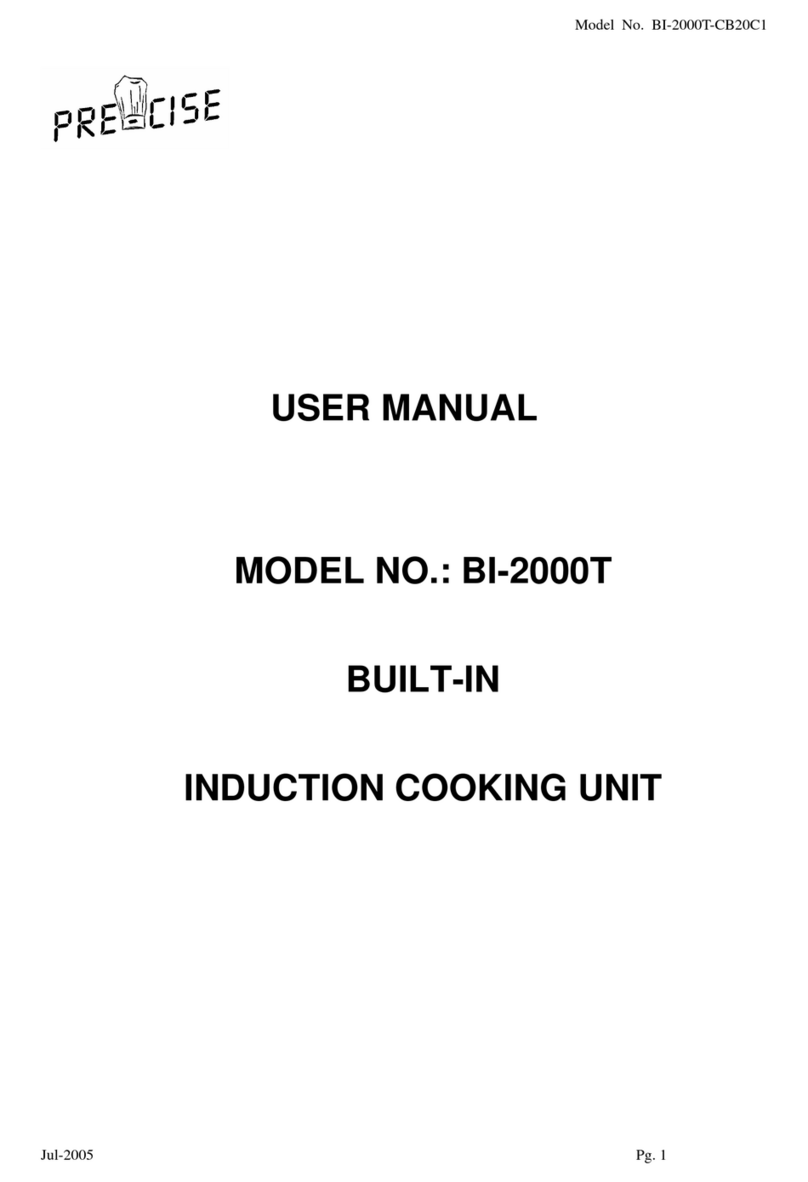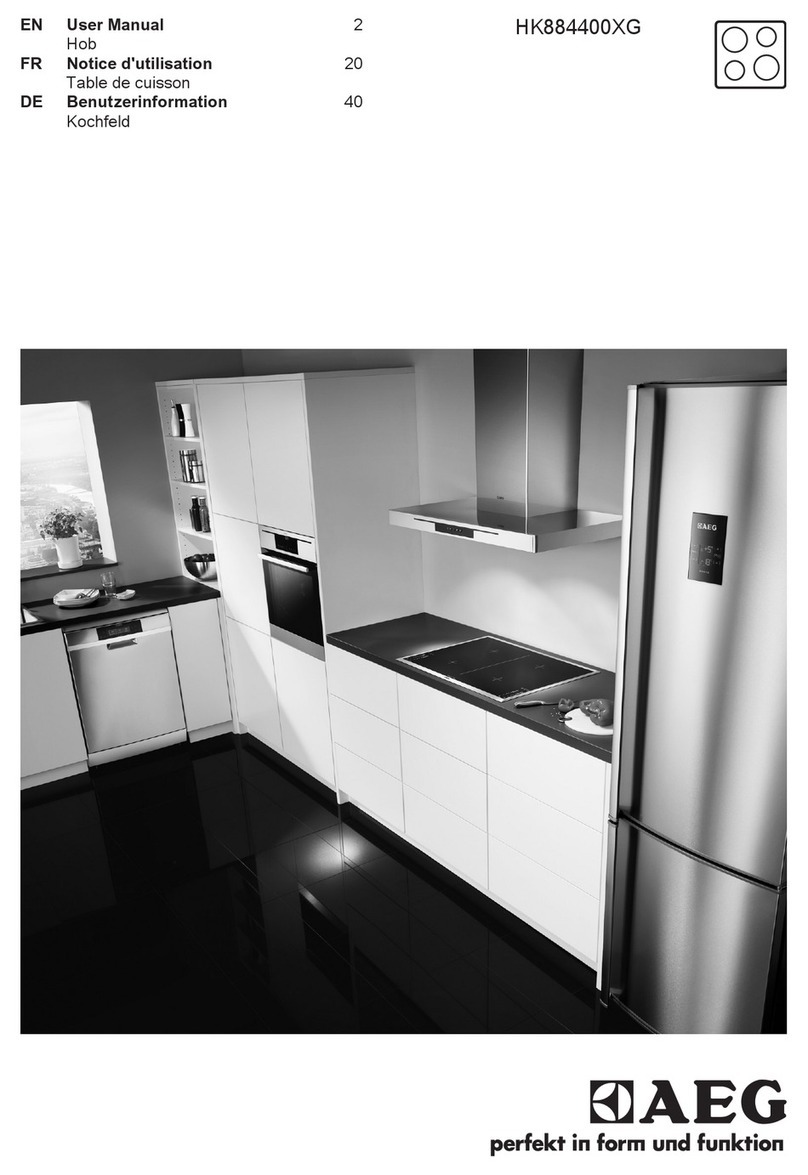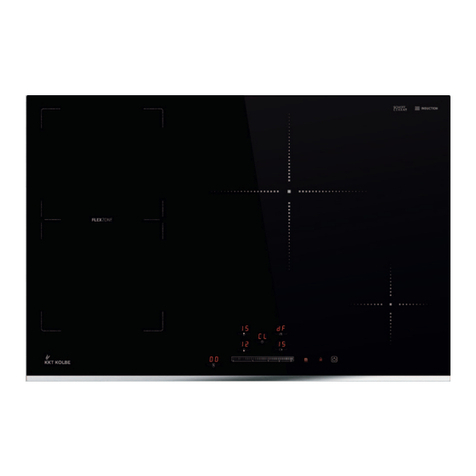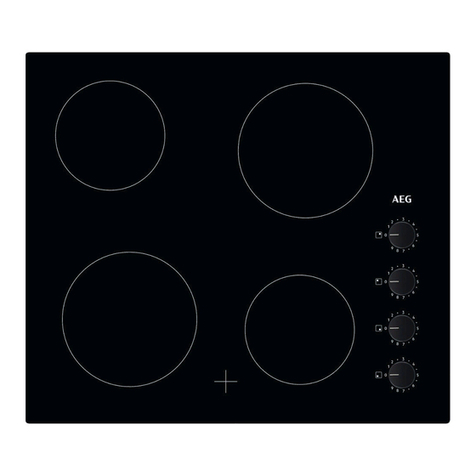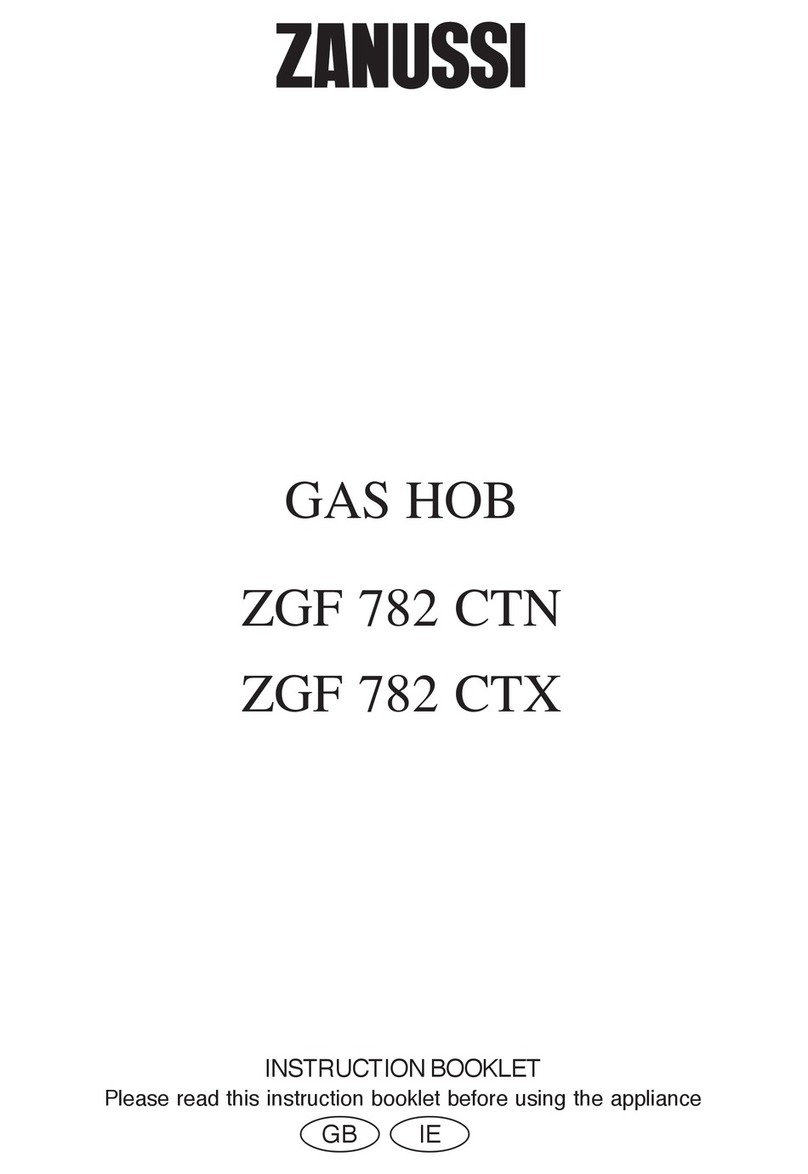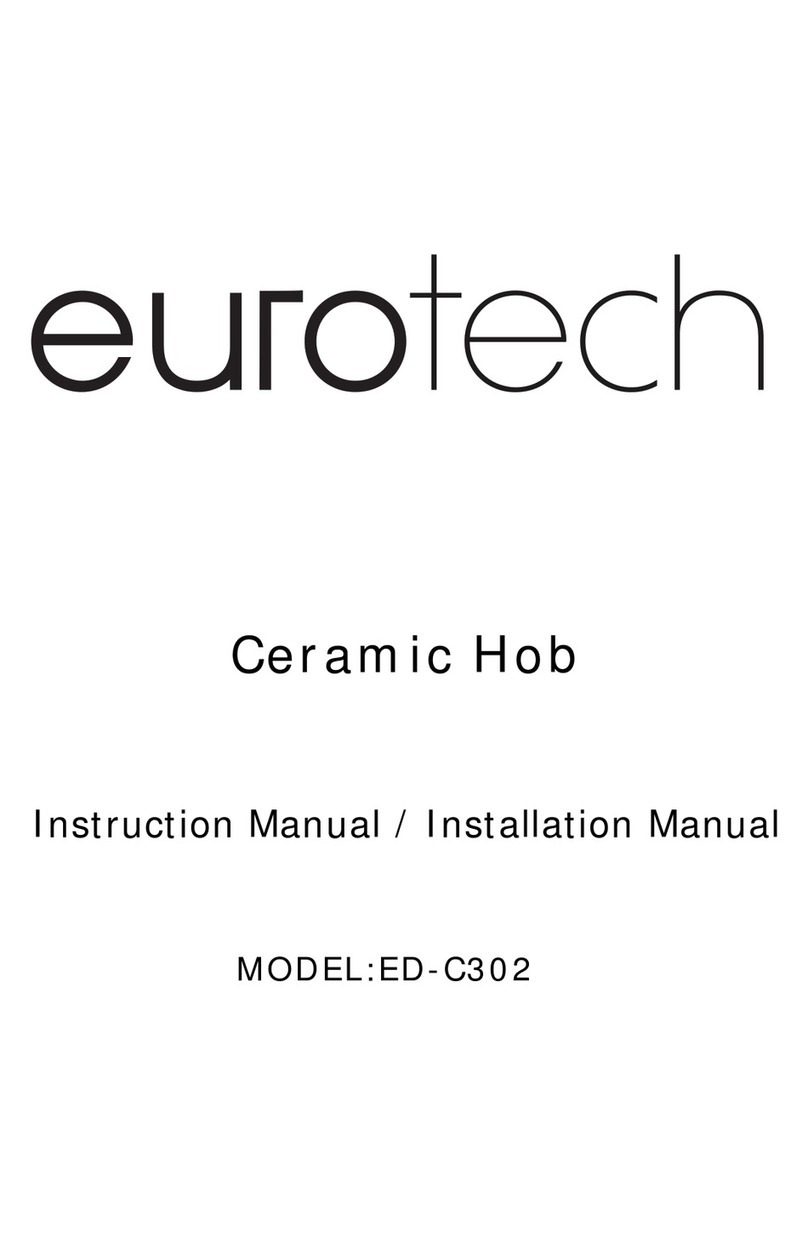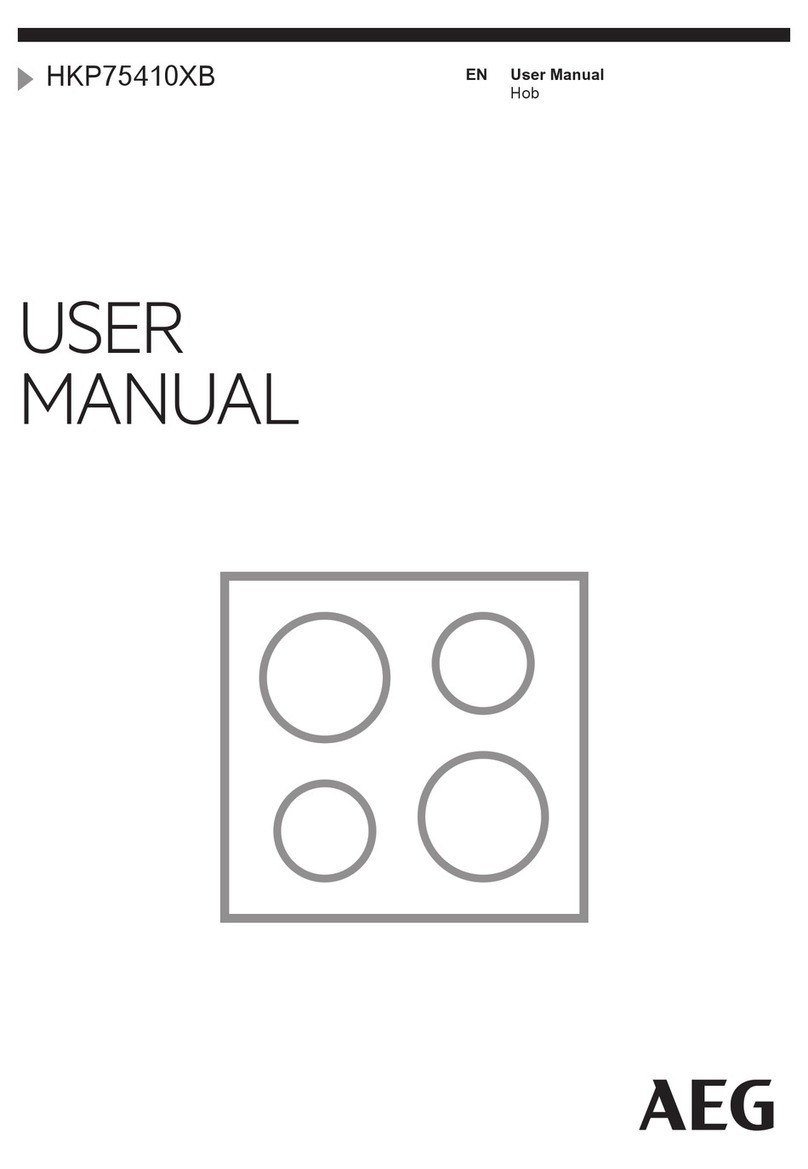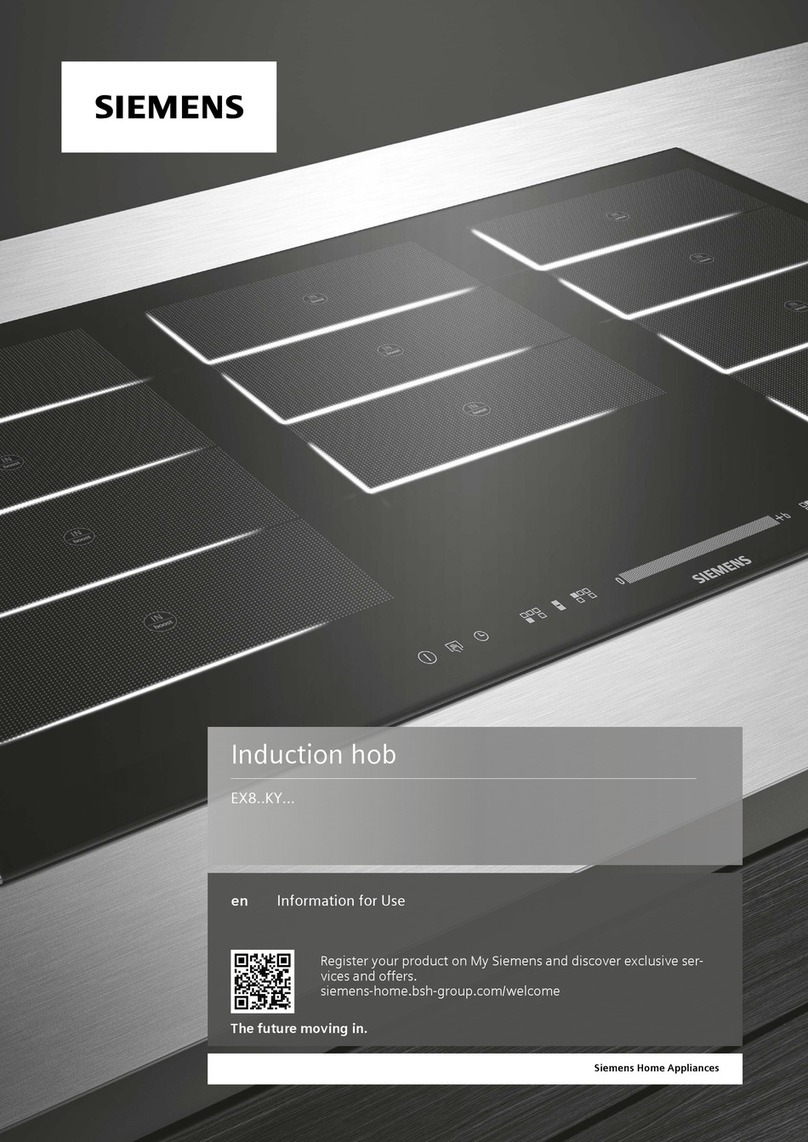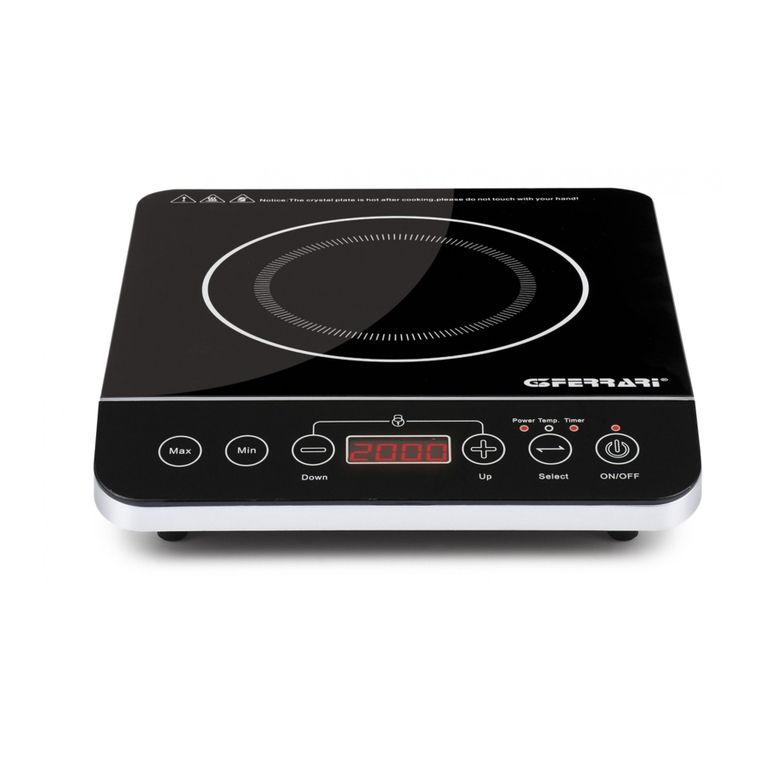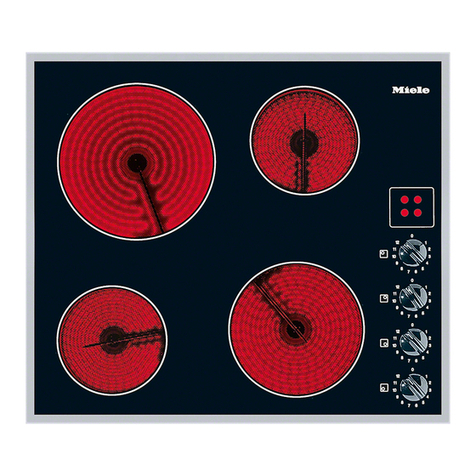
en Safety
4
Escaping gas may cause an explosion. Small
amounts of gas can collect over a longer
period of time and ignite.
▶Close the safety valve for the gas supply
when the appliance is out of use for pro-
longed periods.
Escaping gas may cause an explosion. If the
liquefied gas bottle is not upright, liquefied
propane/butane can enter the appliance. In-
tense darting flames may therefore escape
from the burners. Components may become
damaged and start to leak over time so that
gas escapes uncontrollably.
▶Always use liquefied gas bottles in an up-
right position.
WARNING‒Risk of poisoning!
Using the gas cooking appliance leads to a
build-up of heat, moisture and combustion
products in the room where the appliance is
installed.
▶Ensure that the kitchen is sufficiently ventil-
ated, in particular when operating the gas
cooking appliance.
▶If the appliance is used intensively and for
prolonged periods, ensure that there is ad-
ditional ventilation so that the combustion
products are safely fed to the outside, e.g.
if using existing ventilation equipment, set a
higher performance level and, at the same
time, ensure that the air is replaced with
fresh air in the room where the appliance is
installed.
▶Consult specialist personnel when installing
additional ventilation equipment.
WARNING‒Risk of fire!
Leaving fat or oil cooking on an unattended
hob can be dangerous and may lead to fires.
▶Never leave hot oil or fat unattended.
▶Never attempt to extinguish a fire using wa-
ter; instead, switch off the appliance and
then cover with a lid or a fire blanket.
The appliance becomes very hot.
▶Never place flammable objects on the
cooktop or in its immediate vicinity.
▶Never store any objects on the cooktop.
The appliance will become hot.
▶Do not keep combustible objects or aero-
sol cans in drawers directly underneath the
hob.
▶Never store or use combustible materials
(e.g. spray cans or cleaning agents) under
the appliance or in its immediate vicinity.
Hob covers can cause accidents, for example
due to overheating, catching fire or materials
shattering.
▶Do not use hob covers.
When gas burners are in operation without
any cookware placed on them, they can build
up a lot of heat. The extractor hood above it
may become damaged or catch fire.
▶Only operate the gas burners with cook-
ware on them.
The appliance becomes very hot, fabrics and
other objects may ignite.
▶Keep fabrics (e.g. garments or curtains)
away from the flames.
▶Never reach over the flames.
▶Do not place combustible objects (e.g. tea
towels or newspapers) on, next to or be-
hind the appliance.
Escaping gas may ignite.
▶If the burner does not ignite after
10seconds, turn the control knob to the
"Off" position and open the door or window
in the room. Do not attempt to re-ignite the
burner for at least one minute.
▶In the event of the burner flames being ac-
cidentally extinguished, turn off the burner
control. Do not attempt to re-ignite the
burner for at least one minute.
Food may catch fire.
▶The cooking process must be monitored. A
short process must be monitored continu-
ously.
WARNING‒Risk of burns!
The accessible parts can become hot during
operation.
▶Small children should be kept away from
the appliance.
Hob protective grilles may cause accidents.
▶Never use hob protective grilles.
Empty cookware becomes extremely hot
when set on gas burners that are operating.
▶Never heat up empty cookware.
The appliance becomes hot during operation.
▶Allow the appliance to cool down before
cleaning.


